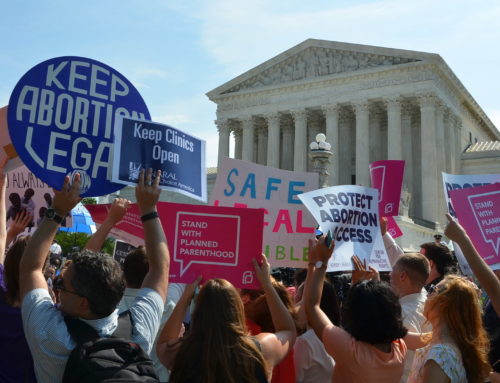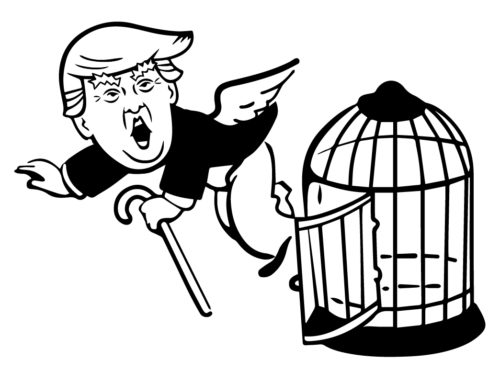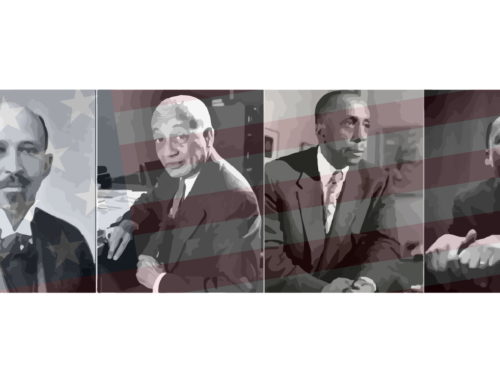By: Mark Satta An essay from 1000-Word Philosophy
Want to criticize your government? Burn a flag? Wear a t-shirt that says f**k the draft?
Thanks to freedom of speech, in many places you can.[1]
But what exactly is freedom of speech? And what does it permit us to say? This essay will review some influential answers to these questions.
1. Protection from Government, Not Private Actors
Freedom of speech, sometimes called freedom of expression, is a legal right to express many beliefs and ideas without government interference or punishment. This freedom does not typically prevent private entities (e.g., ordinary citizens or private organizations) from limiting speech.[2]
If freedom of speech prevented private entities from limiting speech, freedom of speech could not be applied consistently because the freedom of speech includes the ability not to speak.[3] So, e.g., if a newspaper was forced to publish every piece of writing submitted to it, then that newspaper would lose some ability to not speak.
Freedom of speech also includes the right not to listen to or receive other people’s messages.[4] If freedom of speech did not allow this, one person’s right to tell you something could conflict with your right to not listen.
The fact that freedom of speech only prevents government interference doesn’t entail that freedom of speech is irrelevant to action by private entities. Some argue that certain private entities ought to voluntarily conform to legal standards for speech protection: e.g., that private universities should conform to the free speech standards legally required by public universities.[5]
2. Limits on Free Speech
Freedom of speech is not an unlimited right. All governments impose some limits on what kinds of speech they will protect. This is because freedom of speech, like all rights, must be balanced against other rights and values.
Common types of speech not protected by freedom of speech include threats of violence, false advertising, and defamation (i.e., false statements that unjustly harm someone’s reputation).[6]
Many democratic nations do not protect hate speech (i.e., speech intended to threaten, degrade, or incite hatred against a group or group member based on group prejudice). But some other nations, including the United States, treat hate speech as protected speech. Whether hate speech should receive free speech protection has been much debated in recent years.[7]
But even protected speech can be limited to an extent by the government: e.g., freedom of speech does not permit just anyone to enter a military base or a class at a public university and start talking. This is true because, even though military bases and public universities are government-run, these spaces seek to achieve other important goals that justify limiting free speech.
Freedom of speech gives you much greater latitude in a public park, a public sidewalk, or in your own home. But even in public places like parks and sidewalks, freedom of speech allows for content-neutral restrictions on speech: e.g., a town can have a noise ordinance banning playing loud music in parks near residential neighborhoods after midnight.
But it is important that these restrictions be content- and viewpoint-neutral.[8] Thus, a town could not pass an ordinance limiting speech only about certain topics or from certain perspectives in the park. Such a rule would discriminate based on the content or viewpoint of the speech. An important part of freedom of speech is that the government cannot restrict speech just because it doesn’t like the topics or agree with the speaker. Freedom of speech also doesn’t allow for the suppression of ideas simply because those ideas are unpopular.
3. Expressive Conduct
Freedom of speech protects more than just spoken and written expression. It also protects many other activities through which ideas can be expressed:[9] e.g., in the United States, abstract art, non-lyrical music, and marching in a parade are all activities protected under the freedom of speech.[10]
There are controversies concerning which activities ought to be considered expressive conduct: e.g., there is substantial disagreement about whether political spending by corporations ought to be protected as free speech.[11] There are also disagreements about if and when the creation of products like wedding cakes and photographs ought to be considered protected speech.[12]
4. Prior Restraint versus Subsequent Punishment
Freedom of speech protects people against two different types of government interference: prior restraint and subsequent punishment.
A prior restraint prevents you from speaking: it restrains your speech prior to it being made. At one point, many legal scholars thought that freedom of speech meant only freedom from prior restraint.[13] That is no longer true.
Today, most everyone believes that freedom of speech protects people not only from prior restraint, but also from subsequent punishment (i.e., from being legally sanctioned for protected speech). This makes freedom of speech more robust because it protects people not only from having their protected speech restrained, but also from having their protected speech punished by the government.
5. Why is Free Speech Important?
Philosophers and legal scholars have given many different explanations for why free speech is important. Many scholars think there are multiple good reasons why we protect free speech.[14]
Three common rationales for free speech protections are that they help us (1) discover truth, (2) respect human autonomy, and (3) preserve democracy by allowing criticism of government.
Influential advocates of the idea that free speech helps us discover truth include writer John Milton, philosopher John Stuart Mill, and U.S. Supreme Court Justices Oliver Wendell Holmes and Louis Brandeis.[15]
One common form of the truth discovery argument is that the best way to overcome false speech is with more speech.[16] Given what we know about how viral misinformation works, such a claim can appear implausible.[17] But even if this version of the truth discovery argument is mistaken, there may be weaker forms of a truth-preservation principle that provide us with good reason to safeguard free speech: e.g., someone might argue that the fallibility of political leaders requires them to avoid suppressing others’ ideas.
6. Conclusion
Freedom of speech is valuable. Protecting it first requires understanding it.
Notes
[1] See, e.g., Brandenburg v. Ohio, Texas v. Johnson, and Cohen v. California.
[2] See, e.g., U.S. Const. Amend I.
[5] Chemerinsky and Gillman 2017.
[6] Maras 2015, Redish and Voils 2017, and Post 1986.
[7] See, e.g., Waldron 2012 and Strossen 2018.
[9] Tushnet, Chen, and Blocher 2017.
[10] See, e.g., Hurley v. Irish-American Gay, Lesbian, and Bisexual Group of Boston.
[15] Milton 1644 (reprinted 1918), Mill 1859, Abrams v. United States (Holmes, J. dissenting), Whitney v. California (Brandeis, J. concurring).
[16] See, e.g., Milton 1644 (reprinted 1918), Whitney v. California (Brandeis, J. concurring).
References
Abrams v. the United States, 250 U.S. 616 (1919).
Brandenburg v. Ohio, 395 U.S. 444 (1969).
Cohen v. California, 403 U.S. 15 (1971).
Hurley v. Irish American Gay, Lesbian, and Bisexual Group of Boston, 515 U.S. 557 (1995).
Texas v. Johnson, 491 U.S. 397 (1989).
Whitney v. California, 274 U.S. 357 (1927).
Corbin, Caroline Mala. 2009. “The First Amendment right against compelled listening.” Boston University Law Review, 89 (3): 939-1016.
Chemerinsky, Erwin and Howard Gillman. 2017. Free Speech on Campus. Yale University Press.
Gaebler, David. 1982. “First Amendment Protection Against Government Compelled Expression and Association.” Boston College Law Review, 23 (4): 995-1023.
Greenawalt, Kent. 1989. “Free Speech Justifications.” Columbia Law Review 89 (1): 119-155.
Hasen, Richard L. 2011. “Citizens United and the Illusion of Coherence.” Michigan Law Review, 109 (4): 581-623.
Healy, Thomas. 2013. The Great Dissent: How Oliver Wendell Holmes Changed His Mind—and Changed the History of Free Speech in America. Metropolitan Books.
Jacobs, Leslie Gielow. 2003. “Clarifying the Content-Based/Content Neutral and Content/Viewpoint Determinations.” McGeorge Law Review, 34 (3): 595-635.
Liptak, Adam. 2017. “Where to Draw Line on Free Speech? Wedding Cake Case Vexes Lawyers.” New York Times.
Maras, Marie-Helen. 2015. “Unprotected Speech Communicated via Social Media: What Amounts to a True Threat?” Journal of Internet Law, 19 (3): 3-9.
Mill, John Stuart. 1859. On Liberty. John W. Parker & Son.
Milton, John. 1918. Areopagitica. Cambridge University Press.
Post, Robert C. 1986. “The Social Foundations of Defamation Law: Reputation and the Constitution” California Law Review, 74: 691-742.
Rabban, David M. 1981. “The First Amendment in Its Forgotten Years.” Yale Law Journal, 90 (3): 514-595.
Redish, Martin H. and Kyle Voils. 2017. “False Commercial Speech and the First Amendment: Understanding the Implications of the Equivalency Principle.” William & Mary Bill of Rights Journal, 25: 765-799.
Strossen, Nadine. 2018. Hate: Why We Should Resist it With Free Speech, Not Censorship. Oxford University Press.
Tushnet, Mark V., Alan K. Chen, and Joseph Blocher. 2017. Free Speech Beyond Words: The Surprising Reach of the First Amendment. New York University Press.
Waldron, Jeremy. 2012. The Harm in Hate Speech. Harvard University Press.
Wu, Tim. 2018. “Is the First Amendment Obsolete?” Michigan Law Review, 117 (3): 547-581.
For Further Reading
“Freedom of Expression – Speech and Press.” Cornell Law School’s Legal Information Institute.
van Mill, David, “Freedom of Speech”, The Stanford Encyclopedia of Philosophy (Spring 2021 Edition), Edward N. Zalta (ed.)
Mark Satta is an Assistant Professor of Philosophy at Wayne State University in Detroit, Michigan. He received his PhD in Philosophy from Purdue University and his JD at Harvard Law School. Some of his philosophical research interests include philosophy of law, epistemology, bioethics, and philosophy of language. MarkSatta.com
Image: Microphone via 1000 Word Philosophy.










Leave A Comment